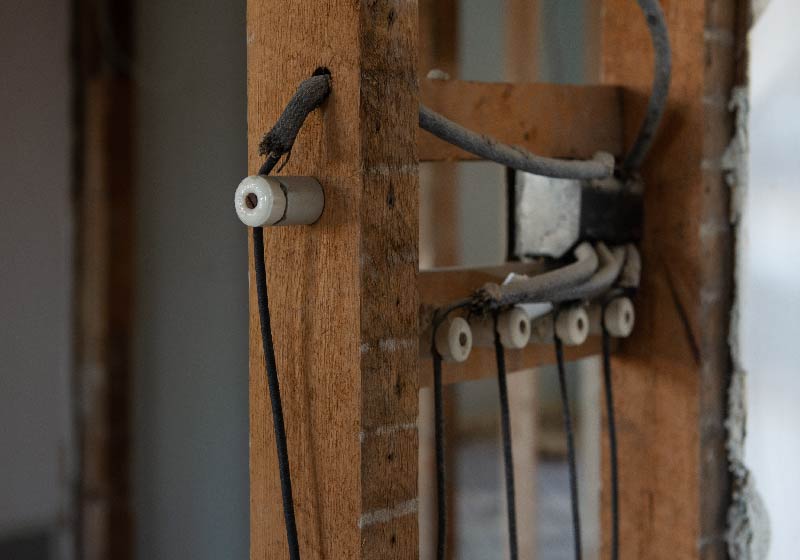Every year new construction techniques are implemented into homes to make them more functional, more energy efficient, and safer for families. While this certainly doesn’t mean that newly-constructed homes are without their own problems, these new innovations do mean that more and more old home features tend to become obsolete over time.
While some “obsolete” home features can be as harmless as a tacky paint color or out-of-date kitchen cabinets, others can pose a serious safety risk. For today’s Inspector Insights article, we’re going to key in on one of these old school home features that was once ubiquitous between 1880 and the 1940s.
That feature? Knob and tube wiring.
What is Knob and Tube Wiring?
Knob and tube wiring (abbreviated as K&T) was a standardized electrical wiring system implemented all throughout North America. It used a combination of insulated copper conductors and its namesake porcelain “knobs” and “tubes.” Requiring quite a bit of skill to install, K&T was particularly lauded for its long lifespans, affordability, and ability to meet the basic electrical needs of the time.
K&T wiring is easily identifiable by inspectors, most commonly found in attics, basements, and within walls. Using porcelain tubes to cover wires as they pass through wooden framing materials, K&T systems were carefully set up to ensure no wires were in contact with wood and that there was enough space for heat to dissipate into the open air.
For the time, knob and tube wiring was a marvel of home design and a great answer to the basic needs of the average home. However, as the demands of residential properties changed, knob and tube wiring became a serious cause for concern.
Is Knob and Tube Wiring Dangerous?
In the right setting, knob and tube wiring is not inherently dangerous, however there are a few things homeowners should be aware of:
1. Homes Require More Power Today
The first issue that knob and tube wiring systems face today is that the electrical demands of a home are much more extreme than back in 1880. While knob and tube wiring could be set up to handle heavier duty appliances like dishwashers, dryers, and modern refrigerators, heavy modifications would be required to update these older systems. Which leads straight into the second issue with modern K&T.
2. Modern Modifications Can Lead to Problems
Because they’ve been around for such a long time, knob and tube wiring systems have had plenty of opportunities to be tampered with by untrained hands and ambitious DIYers. Bending K&T can cause wiring insulation to crack and peel away, leading to major inefficiencies and fire hazards.
3. K&T Wiring Lacks a Grounding Conductor
Part of the reason why K&T wiring is considered obsolete is its lack of grounding wire which is incompatible with modern appliances and can cause them to short out, shock people, and even cause fires. While there may be ways to make knob and tube systems compatible with appliances that need grounding (such as using GFCI outlets), certified electricians will commonly recommend full replacement.
4. Building Insulation and K&T Don’t Mix
Finally, the biggest concern related to knob and tube wiring is the major fire hazard that it causes when in contact with building insulation. As mentioned earlier, K&T wires need space to allow their heat to dissipate. When covered by modern insulation materials, this heat does not have the open air it needs and will likely cause the insulation to catch fire.
In most areas, homes with active knob and tube wiring will need to have a certified electrician sign off on its safety before the home can be insured, and even then, some providers may steer clear. According to Angie’s List, rewiring a home can cost up to $10,000. or this reason, and for all the previously mentioned points, it’s crucial for buyers to be aware of any home’s electrical system before placing an offer!
NPI inspectors carry voltage detectors which can confirm whether knob and tube wiring is active or not. Need a home inspection? Call NPI before you buy!



